
|
| Accept Cookies | Customize | Refuse Cookies |
Tzeol www.juzaphoto.com/p/Tzeol  |
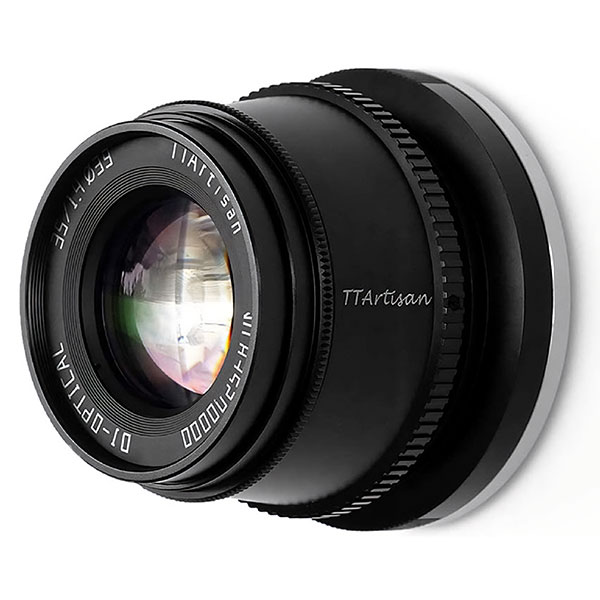 | TTArtisan APS-C 35mm f/1.4 Pros: Very pleasant aesthetic appearance, very robust construction, small size and weight, negligible price compared to performance. The bokeh is very pleasant!!! Blur abundantly and nicely Cons: ... really... I didn't find any. Opinion: Aesthetically very beautiful, it gives an excellent feeling of robustness. Even the manual MAF is not too difficult: once you get the hang of it a little you get it right better and more frequently: at f4 you hardly miss a shot. Sharpness is acceptable from 1.4 to f2, it becomes good at f2.8 and, in my opinion, very good from f4 onwards. It gives really beautiful colors and bokeh: I don't really understand on the basis of what unknown optical principle, but I can guarantee that compared with the 50mm Nikkor afs, both closed at f2.8, the 35 ttartisan (despite being an APS C lens) "detaches" the planes much more than the 50 nikon for FF ... This, of course, on the basis of "skin" sensations.... which, however, are often the most "right" ones sent on June 06, 2025 |
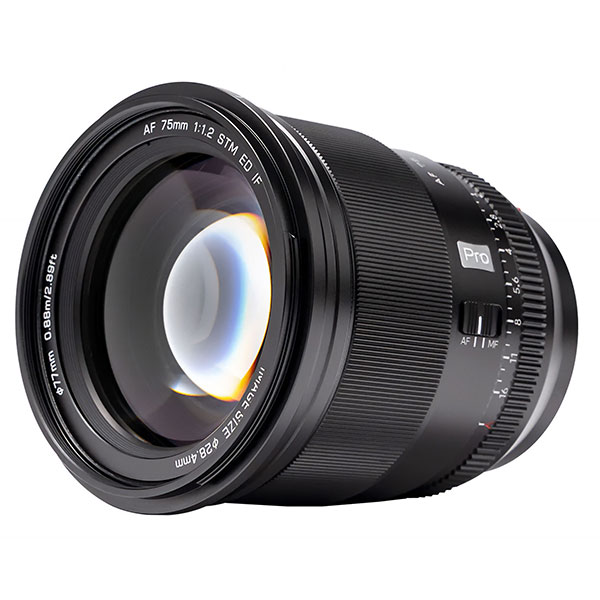 | Viltrox AF 75mm f/1.2 Pro Pros: All. Sharpness, blur (from full frame!!), color rendition, construction. Cons: Really..... Finding a counter to such a perspective and at such a price, means being hypocritical or in bad faith. Opinion: Superb optics both in terms of construction (heavy enough, jerky aperture ring, nice lens hood, excellent grip, feeling of robustness) and in terms of optical performance. I also own a pair of Nikon FFs that I use with the 85 1.4 g Nikkor, with a 135 f2 AI and a (mythical) nikkor 105 f2.5 AIS..... So I really have all the benchmarks for judging a bright portrait lens, and this one, gentlemen, is a portrait lens with flakes and counterflakes. I got it with Fuji bayonet: on the XE I also had the Fuji 90 f2, which plays well with this but (in my opinion) without matching it: the rendering of a close-up at f1.2 is really something magnificent. Even on FF format few, very few lenses are able to return similar results. The autofocus is not lightning-fast, but absolutely in line with the speed and performance of proprietary optics. Someone I read turned up their noses at the weight and size...... which, however, I guarantee you, remain absolutely "manageable", nothing that you cannot take with you. With the reflex I often carry with me the 80 200 2.8 afs Nikkor which in my opinion has splendid colors and blur...... here... that one there, in terms of weight and dimensions, becomes really challenging! sent on March 06, 2025 |
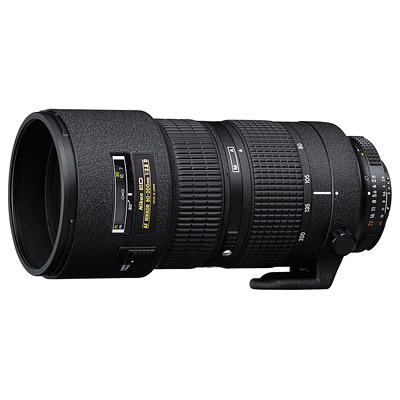 | Nikon AF 80-200 f/2.8 ED D Pros: AF-S MODEL REVIEW. Construction, aesthetic appearance (it's really beautiful!), Sharpness and blur. Cons: AF-S MODEL REVIEW. AF motor that can break and that, in many examples, does not work as it should. Weight and size. Opinion: I had the first 80 200 2.8 pump-engine, then the AFD ring nut and finally the AF-S big winder. This one is visibly and substantially superior to the previous ones in terms of overall performance: sharper, especially at maximum aperture, but above all with an absolutely beautiful bokeh that its predecessors did not have... A truly uncompromising blur, like a real portrait optic!!! At 135, 150, 180mm focal length, it easily plays with fixed luminaires: I also have the 180 AFD 2.8 and I often use the 135 f2 AI and, honestly, at the same focal length I don't see any noteworthy differences!! We could to all intents and purposes define the latest version of the 80 200 (AF-S, in fact) as a "portrait tele zoom" being able to compete with bright fixed cameras such as, for example, an 85 1.8, a 105 f2 or a 135 f2... In "less" and "worse" than these, it has only the weight and versatility factor, having considerable dimensions and dimensions. The autofocus, if it works well (!), is fast and accurate..... Unfortunately in many examples this is already broken, or is about to break, due to the well-known problems with the ultrasonic engine that also afflict the 28 70 and the 17 35 always F2.8 Costante of the same series. What a shame! Look: if you can still find it on sale today at the not insignificant sum of 400-500 euros, even considering that it is a model that is no longer recent, that it does not have VR (like the later 70 200 2.8) and that the sword of Damocles of engine breakage looms over its durability... well..... The reason, believe me, is there! I use it on D3s and D700....... I think that mounted on the Z (it keeps the AF motor!), and becoming stabilized as a result, it really becomes an almost unbeatable lens in its focal range! sent on January 04, 2024 |
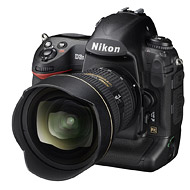 | Nikon D3s Pros: Camera "photonics" ! Not only as a body, but also as a sensor.... always returns beautiful files, very workable, with the right saturation, sharpness, contrast etc .... Proven that there are defects and limitations in all other SLRs not belonging to the pro range .... including the excellent D610, D750, D800 etc ... Cons: I could say weight and size..... But it is part of the "package". Lighter and smaller, it would become another machine and lose some of its merits. Opinion: Awesome machine. In all. There is not an aspect for which it is not at least "excellent". The Autofocus "hooks" immediately and when you shoot it seems to shoot with a sniper rifle ... Very robust, very balanced, all controls in the right place! I also own a D750 and I own a D610.... Excellent SLRs, but which are inexorably a step behind the D3s, despite being much more recent and current projects. The files of the D3s I prefer them to those of all other machines ...... Even with its "only" 12 mpx (... or maybe just "thanks to its only 12 mpx") the files are of a quality for me at the top! The colors, for example, are "baked" immediately "right", without many machinations and post productions ... Used the D3s, which gives a feeling of stunning solidity, when you pick up a D750 you have the impression of shooting with a "camera" to keep in the cotton wool, because it could crack in the plastics at any moment. sent on August 21, 2023 |
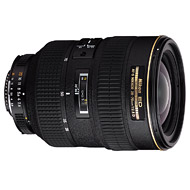 | Nikon AF-S 28-70mm f/2.8 D ED Pros: Very solid and well built, perhaps between the myriad of 28 - 70 and 24 - 70 f2.8 is not the sharpest or most contrasted or most resolving or most resistant to flare ever, but its overall rendering, its skilful mix of sharpness, contrast, resolution and blur yield make it really very "lovable" ... Cons: The weight and dimensions, but not even the other f2.8 joke, and of course the well-known problem with the autofocus motor that afflicts many specimens Opinion: Meanwhile, when you mount it in front of the car you always feel very "safe"... of everything: precise AF (and all in all also fast), always made excellent at any aperture, with the plus that at f2.8 - f3.2 gives an excellent bokeh, worthy of a portrait lens, particularly suitable for portraits set, where the color rendering is really a full span above all the other zooms (bright and not) that I tried. Good zoom range, the 28mm is already a nice wide angle (in spite of those who without the 24 as a starting seems not to be able to live) and at 70mm (a t.a.) you can easily make pleasant portraits "head - shoulders". Clear without having that "surgical" yield not always so pleasant and welcome ... Robust barrel that does not fear some small accidental bottarella. And then.... aesthetically, but also to use, it is really beautiful ... A work of art... only very few other Nikkor lenses (the 105 and 135 f2 DC come to mind) are as pleasant to use and hold. Too bad many specimens are afflicted by a "problematic" AF engine: even mine after a month that remains stationary does not start immediately but requires a quick movement of the AF ring done manually. If you want to take the whim to understand how it would make this optics, but you do not feel like daring to buy for the above, I recommend finding a specimen (not opaque) of Nikkor 35 70 AF 2.8 (which had the perfect AF engine, but is often plagued by opacification) .... : its yield is very similar, although it starts from 35mm and suffers a lot of flare and backlight ... But in optimal conditions even that in my opinion is as remarkable as glass!!! sent on July 31, 2023 |
 | Nikon 180mm f/2.8 ED Ai-S Pros: Extraordinary optics! Color rendering, sharpness, contrast, bokeh, all at the highest level. To have such a long focal length it is also relatively compact and not too heavy (compared to the various 80 - 200 and 70 - 200 2.8) Cons: I could say manual focusing..... But it is a characteristic of it, not a defect. Opinion: I will not dwell on describing the virtues of this perspective rightly praised and declaimed. I could get boring. But every time I pick it up and take shots of it, I am punctually amazed by the yield of which it is capable. I'll just tell you that I'm a lover of portraits and portrait lenses: I currently own an 85 Tamron VC f1.8 (very sharp!!!!!!! ... scary!), a nikkor 105 f2.5 AIS, a sigma 105 f2.8 OS HSM, a 135 f2 AIS, a 135 f2 AF DC, an 80 200 AF-S (... without whistling, but with slow engine :-) .... and in the past I have owned other in the range of focal lengths indicated. The 180 AIS outclasses everything.... Even the excellent 135 F2, with a very nice yield, I still consider them optically inferior (especially for the phenomena of flare at full aperture). The only one able to "stand up to him" and the other multi-decorated Nikkor AIS, the 105mm f2.5 . End. Everything else is a notch below. PS: I had also bought the 180 AF 2.8, believing it was "a 180 AIS with autofocus motor" and reserving to sell the AIS. I used them both six months.... and I ended up selling the AF again. sent on November 08, 2022 |
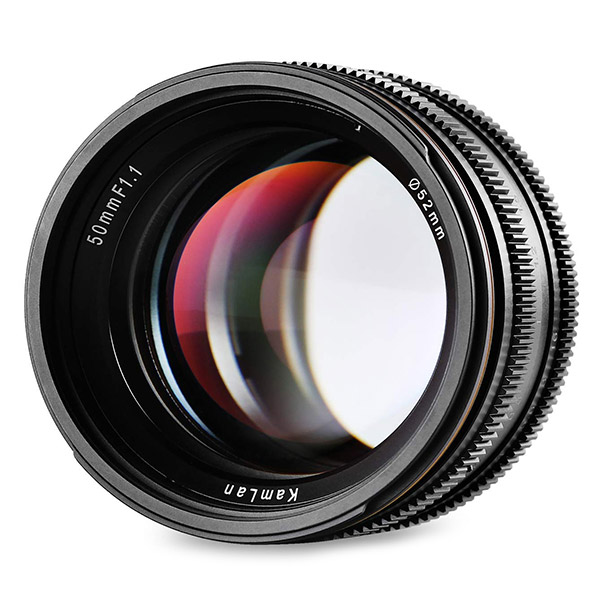 | Sainsonic Kamlan 50mm f/1.1 Pros: Version II : "True" lens: solid, heavy, excellent clutch of the MAF bezel, already very good performance even at full aperture. Very sharp lens, with a crystalline and contrasted yield. Cons: Version II: Manual focus? ..... you already know when you buy.... but eye: at f 1.1 it is difficult the correct MAF even with the focus peacking and everything else .... Then the bokeh... definitely the only note a bit out of tune. I would call it acceptable, "cute"..... but don't expect the blurry of an 85. Opinion: I review version II..... which, I speak as a former owner of version I, is a completely different perspective. This is a "real" goal... too much: the lens is quite heavy and tends to unbalance the compact ML: let's say it looks good on a Fuji XT, ... on an Oly EM1.... definitely less on a Sony A6000, which tends to skew heavily forward. The overall yield is definitely good: at f1.1 not only is it very usable, but I would say that it is also already very sharp and detailed! The use is particularly pleasant: it seems anything but a "cinesata".... it gives, rather, the pleasant feeling of having a beautiful valuable luminous optics. All glass and metal.... It reminds me closely, albeit on a smaller scale as dimensions, of the 105 1.8 nikkor AIS, or the 135 nikkor f2 AIS.... and sorry if it's little! In my opinion, therefore, everything is fine ..... the only real flaw is bokeh: that it is not ugly, for heaven's sake!... but from an f 1.1 lens for APS one would expect "the equivalent" of what an 85 1.4 on FF could do, or at least almost. Instead we are definitely below as surrender. In essence: the "detachment of the planes" is that of a portrait lens, the blurred, unfortunately, no. sent on February 28, 2022 |
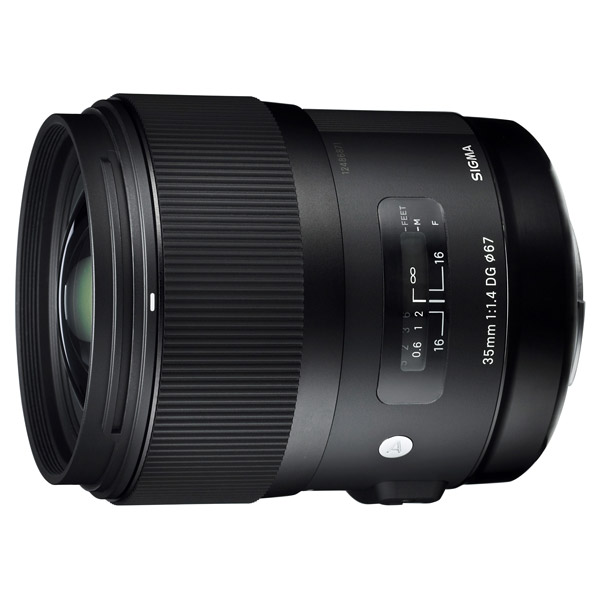 | Sigma 35mm f/1.4 DG HSM Art Pros: Pretty much everything. Sharpness, colors, blurred, transition areas of fire and out of focus always very pleasant ..... Cons: Weight? Yes, but also no: in short: it is heavy but we remain within the limits of "normal transportability". The AF that is not a splinter and, we know, sometimes needs calibration. Opinion: I confirm all the "positive notes" that I have read in the reviews below. I always say this: the paradox is that the relatively low price rows a bit "against" ..... because for some amateur photographers it is necessary that above the optics there is written "Zeiss" or "Leica" and pay it 2,3,4000 euros because that is really an excellent "glass".... and those that would be defects for any other objective for the latter (itinerant mortgages) become "character" , which only a true lover of true photography and a philosopher of the image knows how to appreciate and understand ..... The truth is that with 400 euros used you take home a 35mm that "winters" all around! At f1.4 it's sharp, contrasted, saturated and crystal clear to scare! ..... and sorry if it's little! Maybe, "in return", he could have a nervous and unpleasant bokeh.... but no: beautiful even that, in some ways "comparable" to what can be obtained with real portrait optics (which, of course, are more "specialized" in this sense). Leave miserably "to the pole" any bright zoom.... proven this the comparison will come spontaneously, and will be ruthless! The photos below, from the gallery, I think speak for themselves. UPDATE August 2022: having used it often, and willingly, "in the field" I confirm the excellent opinions having to add, however, that the optics has as a "feature - defect" that of closing the shadows a lot ... You have to take this into account and know how to regulate. In the set portrait, for example, this factor tends to play against it. sent on January 03, 2022 |
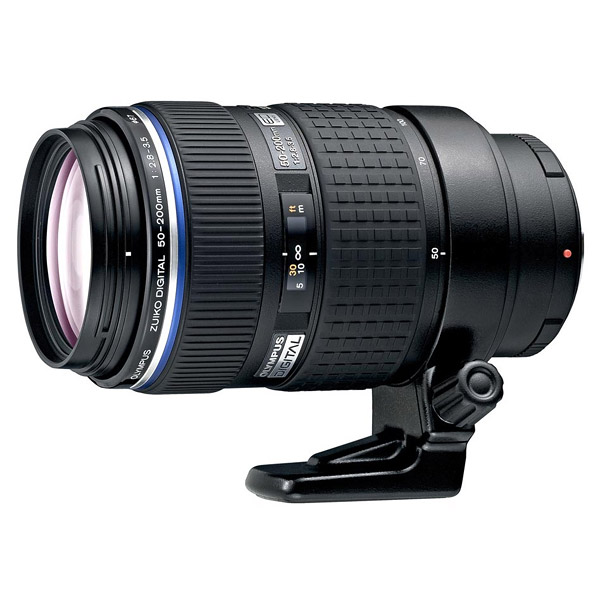 | Olympus Zuiko Digital ED 50-200mm f/2.8-3.5 SWD Pros: Very sharp at all focal lengths (even the longest ones), bright, nice bokeh, solid barrel without being "scrambled"...... and first of all the undoubtedly favorable quality - price ratio!!!!! Cons: The AF, even with the original Olympus adapter (MMF1) and also mounted on the flagship Oly EM1, is never as fast as proprietary micro 4/3 lenses. Aesthetically it is less pleasing to look at than its "counterpart" 40 150 2.8 per m4/3 or the 50 200 2.8 - 4 Panasonic (always for m4/3). Opinion: A pleasant surprise. I specify that I do NOT own the SWD but the normal version .... however, but on the point I do not feel like putting my hand on the fire, I do not think that the SWD system allows greater speed of focus on the m4/3 adapted (on 4/3 reflex bodies, instead, definitely yes!). Now: af, I already wrote it, is not lightning ... but when it hooks, it hooks precise! And it hardly makes mistakes (or at least it doesn't make more mistakes than I make the m4/3 optics). Optically it was a revelation: the subjects "approach" without having to go up with the shutter speeds: at 1/80 you can safely make portraits of people taken at the maximum focal length (200mm .... which equals 400mm on FF!) without problems of "moved": the stabilizer in the car of the EM1, with this objective, shows off all its "power" and effectiveness! Not only, then, the lens is sharp up to the extreme focal length, but it gives bokeh on average very pleasant: we are perhaps not at the level of portrait optics, but we are very close ... I also have the 75 Oly 1.8....so I know what I'm talking about. Let's say that on the outside, as for the detachment of the planes and the sweetness of the blurred, at the longest focal lengths (from 120mm upwards) the big Oly 50 200 does not suffer reverential fears towards the more modern (and also much lighter) Oly 75. Excellent portraits are made with one and excellent portraits are also made with the other. The price, then, is unbeatable: with patience you can take it away at 300 euros put well: count that you need at least (but at least!!!) twice as much for the 40 150 2.8, which will be a little more compact (but not even so much anyway ....), has the fastest Af, but stops first on the focal length. sent on July 23, 2021 |
 | Nikon 135mm f/2 Ai Pros: Overall yield really noteworthy: beautiful colors, good contrast and sharpness, great bokeh, compact for focal and opening. An excellent portrait lens! Cons: The fact that it is not autofocus (but it is not even fair to say it is a defect, it is peculiarity inherent to the optics); A hair of flares and reflections in difficult light conditions.... but really difficult! Opinion: Wonderful optics. The overall yield is truly, but truly noteworthy. Beautiful colors, excellent bokeh, excellent sharpness and contrast even at full opening. Physically and mechanically it is a pleasure to mount and use it. Very few optics can return such a "massive" feeling. Focusing on aa f 2.0, of course, is quite "delicate" as a task, especially on SLRs. Let's say that I trudge by making at least 3 shots of the same "pose" with very slight advance and retreat of the ring with respect to the point of "hypothesized correct focus". Good there is that there are no calibration problems :-) . A 135 f2, you mean, if AF really has to be adjusted to perfection being really a few cm the PDC. Being suffering from "sfocus" (:-) ) I could not but compare this 135 with the 105 1.8 AiS owned in the past and with the Nikkor 180 2.8 AiS still used by me. The bokeh effect is certainly better here than on 105 1.8: I remember that on that, in some situations, it was a little "nervous" or, in any case, not so particularly pleasant and captivating. The 135 f2 AIS plays it with the 180 2.8 AiS which compensates for the lower aperture with the longer focal length. I dare say that, between the two, perhaps the 180 still remains a pelino above, but it must be remembered that, indoors, a 135 can still be used quietly, and it is therefore more versatile optics, a 180 becomes quite complicated to use it. "Physically", then, I find the 135 much more balanced on the machine: eye, they weigh practically the same, indeed, to be precise, weighs something more even the 135 (!), but being shorter and less bulky, the machine + lens package is much more "firm" with the 135 in front than with the 180 that protrudes significantly further. The various zooms 80 200 and 70 200 2.8, then........... in this sense they are "out of the race". Negatively speaking. I find an 80 200 or a 70 200 so heavy and cumbersome that it can NEVER be preferred to these fixes (105, 135, 180): their "compactness" alone is already a full point in their favor, even before "starting the race" on performance! sent on December 11, 2020 |
 | Nikon 135mm f/2 Ai Pros: Overall yield really noteworthy: beautiful colors, good contrast and sharpness, great bokeh, compact for focal and opening. An excellent portrait lens! Cons: The fact that it is not autofocus (but it is not even fair to say it is a defect, it is peculiarity inherent to the optics); A hair of flares and reflections in difficult light conditions.... but really difficult! Opinion: Wonderful optics. The overall yield is truly, but truly noteworthy. Beautiful colors, excellent bokeh, excellent sharpness and contrast even at full opening. Physically and mechanically it is a pleasure to mount and use it. Very few optics can return such a "massive" feeling. Focusing on aa f 2.0, of course, is quite "delicate" as a task, especially on SLRs. Let's say that I trudge by making at least 3 shots of the same "pose" with very slight advance and retreat of the ring with respect to the point of "hypothesized correct focus". Good there is that there are no calibration problems :-) . A 135 f2, you mean, if AF really has to be adjusted to perfection being really a few cm the PDC. Being suffering from "sfocus" (:-) ) I could not but compare this 135 with the 105 1.8 AiS owned in the past and with the Nikkor 180 2.8 AiS still used by me. The bokeh effect is certainly better here than on 105 1.8: I remember that on that, in some situations, it was a little "nervous" or, in any case, not so particularly pleasant and captivating. The 135 f2 AIS plays it with the 180 2.8 AiS which compensates for the lower aperture with the longer focal length. I dare say that, tar the two, maybe the 180 still remains a pelino above, but it should be remembered that, inside, a 135 can still be used quietly, and it is therefore more versatile optics, a 180 becomes quite complicated to use it. "Physically", then, I find the 135 much more balanced on the machine: eye, they weigh practically the same, indeed, to be precise, weighs something more even the 135 (!), but being shorter and less bulky, the machine + lens package is much more "firm" with the 135 in front than with the 180 that protrudes significantly further. The various zooms 80 200 and 70 200 2.8, then........... in this sense they are "out of the race". Negatively speaking. I find an 80 200 or a 70 200 so heavy and cumbersome that it can NEVER be preferred to these fixes (105, 135, 180): their "compactness" alone is already a full point in their favor, even before "starting the race" on performance! sent on December 11, 2020 |
 | Konica Hexanon AR 57mm f/1.4 Pros: Value for money; very strong character; pleasantness of the out-of-focus; sharpness (especially from f2 up); Price in the used: if you have patience it is quietly located at 70 - 80 euros. Cons: manual focus (but it's not even a flaw... at the time there was no AF); Opinion: I took it for use on Sony a5000 and A7; then sold... and then recompose to use it on Fuji. A unique and unrepeatable lens. No 50, f.1.8, 1.7, 1.4 or 1.2 has its blur: that it is not only "pushed" (close to what you could have with an 85, more than what I could find in a simple fifty), but it is also (and above all!) very characteristic, particular. I also have the Konica 50 1.4 and 50 1.7: that after (re)bought the 57 are stuck in the drawer, not being able to compete, at the level of overall yield, with the 57 in question. the site "bhula.de" labels it as soft to t.a. and would make him prefer the 50 1.4: true, in part, that the 50 is sharper at t.a., but with much more ordinary and "banal" bokeh The lens, eye, it is true that at t.a. is not exactly a blade, but it must be emphasized, however, that the lens is usable even at 1.4! In B/N I find it absolutely ECCEZIONALE! I would say that this is the field that suits him the most. I know that if he plays with Rokkor 58 1.4 which, unfortunately, I have never tried. sent on October 09, 2020 |
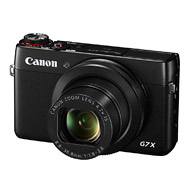 | Canon PowerShot G7 X Pros: "Valuable" machine: sensor larger than the classic compacts, very bright optics. The machine is TRULY pocket-sized and compact. Smaller than you can imagine seeing it on real websites on the web! Dimensions and weight really reduced to the bone! Very exploitable focal excursion: good 24mm, which is already a nice wide angle, excellent the equivalent 100mm which, thanks also to the f2.8 opening (at 100mm) allows you to detach the close-ups of the faces from the background. Finally, the overall photographic quality is satisfactory: in good light conditions the yield is not so far (indeed!) from a micro 4/3 with kit optics (14-42, 12-32, etc..). Beautiful 180 degree folding rear screen that allows you to work in "selfie mode". I found myself using it and appreciating it more than I would have imagined. Also because the result in terms of quality is better than what can be obtained from a normal mobile phone! Cons: Well... the cost, surely! Its compactness pays off, and so much!.... with similar figures, looking well, you can take home a mirrorless with the optics of kits. And all the advantages of interchangeable goals. Then the make-up...... aesthetically it's not ugly, but it's not that it's very different from the smaller and (most importantly) cheapest compacts ever at Canon's house! Opinion: So: bought used, it satisfied me overall. The sensor is smaller than an m4/3, but the good brightness of the optics (1.8 - 2.8) certainly helps a lot in keeping the iso low in light conditions a little scarce and in the corresponding 100mm yield: (you can make a portrait with the background a little blurry........... remarkable given the type of machine and, above all, its featherweight!). Basically I use it almost always or at 24 (it distorts a little, but nothing dramatic...) or at 100 for portraits(ni). In the rest of the focal range it is "without infamy and without praise". Good jpegs, ready to use, with beautiful colors and a right contrast. Autofocus quite fast (ok.... not lightning, but not even a snail!). It amazes with its size and weight...... really laughable. Even a sony a5000 (or a6000), even with pancakes in front, by comparison look big and heavy (!). With the 1 inch sensor I also had the Nikon j2: this one had a lightning autofocus from her, but as the final rendering of the photos we are there. The J2 was bigger and heavier, but also, probably, firmer! sent on June 17, 2020 |
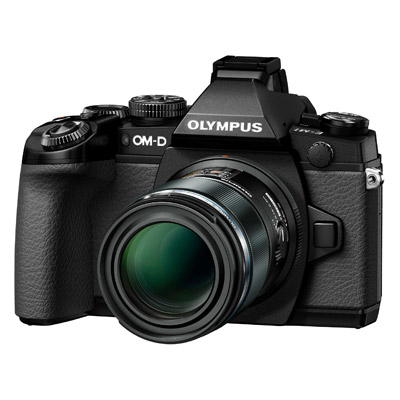 | Olympus OM-D E-M1 Pros: Body small and light machine, but at the same time very "pro". Great jpeg. Autofocus fast and responsive, in relative terms (compared to other m4/3) and absolute (compared to the SLRS possessed). It looks very nice. Cons: At the high iso the sensor begins to show "the rope"... and the differences with the larger FF sensors are shown.... The WB automatically does not always "recommend" well, even when the light conditions are not particularly difficult.... Opinion: At the "machine-to-hold-in-hand" level, we're really at the top. Small but not too much, light, very ergonomic (it falls in the hand very well...... much better than the Sony A7 that I also own and with which it basically shares the size and weight), to the touch and use you immediately feel, "skin", that it is a "pro" body.... never the feeling of photographing with a toy, but always with a very efficient "real" camera. The jpeg files are really good and worthy of special mention: you just need a little attention in the initial setting of the WB: the one in "car" not always "c'just" correctly... Once this preliminary attention has been received, the EM1 pays for the (few) seconds lost by churning out jpeg F A V O L O S I !!!! In fact, in most cases, it becomes almost useless any post, as equally (almost) useless would be the work on the file counterpart saved in raw, since the jpeg "conversion" in the room is really great. I also had EP3, EP5, EPM2 and Panasonic GX1 and GX7: the jpeg, in the EM1, are a notch higher, for overall yield, of all these. The Autofocus is fast and precise... Then... Sure.... the limits of the 4/3 sensor are there, they know each other..... it would not even be correct to ask the machine what you know well at the start will not be able to give. Used with the zuiko 45 1.8 and with the sigma 56 1.4 becomes an excellent compact and lightweight "portrait camera", to be really taken "everywhere". Maybe my D700 with sigma 85 1.4 manages to peel off a little more and make it a little better at the high iso....... but at the price of how much more weight to carry with it!!!!! Paradoxically, I recommend buying this first version, rather than the most recent, in the sense that it has reached a very affordable value for money. Maybe not "intons", with some signs, you can take it home even with just over 200 euros....... sent on February 03, 2020 |
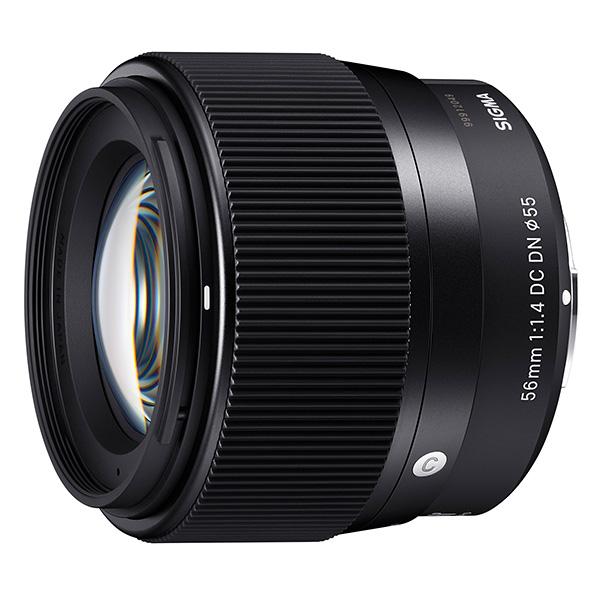 | Sigma 56mm f/1.4 DC DN C Pros: In order of importance (for myself): sharpness to TA, wonderful bokeh, very fast and silent autofocus, lightness and compactness, price (relatively) cheap. Cons: Really.... Nobody! You can't find any flaws in an optics that don't have any! Opinion: What to say: mine is the version for m4/3 and for this format, remaining on 4-500 euros, I think there really is none! The sharpness of the full-opening lens is absolutely extraordinary, both in relative terms (compared with other fixed opticals to portrait for m4/3 and comparing the same optics set to more closed diaphragms), and in absolute terms (I have a sigma 85 1.4 "old" that I use on FF Nikon). Practically the diaphragm only serves to increase or decrease the pdc, not even the contrast and sharpness that are already maximum as far as f 1.4. And then it is a light, compact, "short" lens (compared to the Oly 75 1.8) and of excellent focal length (a 112 on m4/3). I also have the zuiko 45 1.8 ...which I think to keep as "multetto", but only because it is even smaller and lighter and, above all, in case of holidays out of door a little critical is more "expendable", costing, in the used, the exact half of the 56.... To get something more the only one is to turn to the 45 f 1.2 zuiko..... maybe, but I say: "maybe", only that can have something more (I've never tried it...) ... UPDATE: I found the 75 1.8 zuiko at a scary price, and I bought it. To "recover" the money spent I sold, AVVENTATATATATA", the 56, thinking that, in the end, in the case of that, used, at 300 euros I will always be able to find it, instead for that money a 75 1.8 I can no longer find it. And then the urge to try I'm blessed 75 in front of which for months and months I drooled..... Conclusion: between the two I say.... Sigma 56! At the end of the opening you can see the sharper sharpness of 56 compared to the 75....and already this, look after me, just and advance. With an empirical impression, then, the 56 seems to "detach" even more and better from the background. In short: partially repented...... If I ever stay in m4/3 on 56 I will buy it back for sure! "If ever...", precisely..... because with my beautiful Oly EM1, with 56 and 75 mounted in front, I managed to get beautiful photos, but not as much as I managed to do with the old and obsolete D700 with the 85 1.4 in front or the Tamron 70 200 2.8. The limits of the reduced sensor are there! I don't think it's fair to pretend not to see them, considering that, at the price level, they don't give you the m4/3!!! sent on October 21, 2019 |
 | Konica Hexanon AR 40 mm f/1.8 Pros: Very nice and very pleasant to use (in manual). Small, thin, light but at the same time "of substance". Great overall optical performance (good sharpness, nice bokeh, great colors). From f 2.8 and up is NITIDISSIMO!!!! The price.... With 50 euros you take home without problems a well-kept specimen. Cons: At full opening, at least my specimen, trudges a little.... suffers quite from flare, aberrations and sharpness a little latent.... Nothing particularly serious, cmq, remains usable very well even at 1.8....which for a 40mm pancake is still a generous opening. Opinion: Very small, beautiful, very pleasant to use (manual MAF diaphragm diaphragm diaphragm that you end up using almost just for the sake of it, as much as you like the "click, click, click..."). From f 2.8 is NITIDISSIMO: nothing to envy to much more modern lenses and, above all, much more expensive! Beautiful colors and beautiful bokeh with a blurry still well present and evident even on APS C format. The focal point is in my opinion excellent: it distorts very little, being able to approach for a portrait in person even relatively "tight", and at the same time knows how to give that "breath" to the scene that already a (near) 50mm begins to struggle to return... At full opening it shows its limits. but, I repeat, it does not become unusable!, .. indeed, certain "reflections" can be exploited for "artistic" purposes. I also own the Hexanon 50 1.7 which, without a shadow of a doubt, is sharper at T.A. (MA, beware, NOT ALSO FROM F 2.8 IN UP!), but, on the other, maybe it's more "banal" and discounted as a field angle... sent on September 11, 2019 |
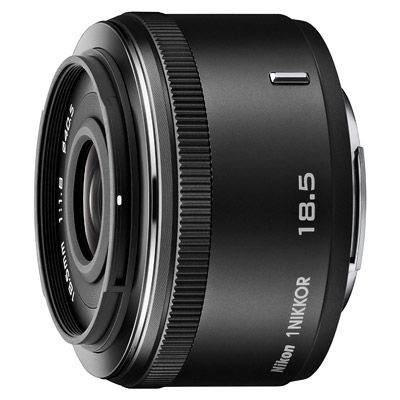 | Nikon 1 18.5mm f/1.8 Pros: Very sharp from all opening, very light, compact (not at the level of a pancake, but almost) beautiful colors, ability to blur and detach the subjects from the background (even on the small sensor CX Nikon 1) Cons: The price. Almost 200 euros, new, I seem tantini, especially considering that the equivalent focal optics on larger formats cost practically the same money... Even less, in some cases (I think of the Panasonic 25 1.7) Opinion: In my opinion who has the Nikon system 1 can not give up this optics. On 10 2.8, another fixed for Nikon's J and V series cameras, at the end it doesn't give much more than it already offers the optics kit (the 10 30 or 11-27.5), and therefore I would not do somersaults to buy it... But this 18.5, equivalent to the 50mm on FF, allows you to make an important step forward to the whole system. In good light conditions it results in a sharpness, a "crystalline" rendering of great pleasantness. Then, not least, approaching the subject you can get a "break" visible from the background that the zoom can not allow. Too bad for the price. They had sold it to 100-120 euros, would make the small fortune of the Nikon Mignon system. Instead.... 200 euro new... At that price a person starts to look other than optics for a system, that "1", which is unlikely to be the only or the main one of an amateur photographer... sent on June 06, 2019 |
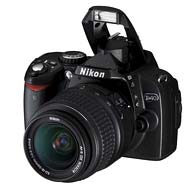 | Nikon D40 Pros: Sensor in my opinion excellent: The few MPX available, combined with CCD sensor technology, allow you to get (at 200 ISO) a "clean" and a sensational photo sharpness. It speaks to you one that uses also a D700 FF, then with a term of comparison "Stern". Compact and light body. It has few commands, but I never really felt the "lack" of anything. What's needed is everything. Cons: Well.. All the cons of entry level: No AF motor, only 3 focus points, a single ring nut to handle times and diaphragms, possibility of "cropping" the photo virtually non-existent given the low number of available MPX. Reduced dynamic range, "simplified", I would call it.... But still overall more than satisfactory! Opinion: Let's start from the rendition of the photos: I used it always paired with 35 1.8 dx or Sigma 17 50 OS 2.8 fixed. In good light conditions, managing to stay on low ISO (200, 300, Max 400 ISO), it churn out images from the exciting details!!! The feeling of sharpness is unbelievable! With the 17 50 you count the lashes by enlarding people's faces. The machine body is compact, lightweight, very plasticous but it gives Comuqnue a feeling of greater robustness than the subsequent series 3000 and 5000 (I had them, almost all.... I speak with knowledge of the cause... The D3300, for example, feels much more plasticose in hand than this D40) the essential functions have all, then, of course, has all the intrinsic limits of entry level. A special praise to the CCD sensor: I repeat: Over the years I bought, owned, used and then also sold the D3100, D3200, D3300, D5000,.... Of all I kept, not by chance, the D40, which I continue to use with the D700. sent on May 30, 2019 |
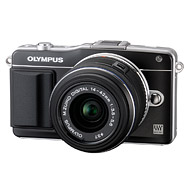 | Olympus PEN E-PM2 Pros: Very Small and very light: to be clear: I also have a Nikon j2 and as dimensions and weight we are practically equal. Despite This you never have the feeling of holding a toy, but still a real camera! Excellent sensor, capable of churing out JPEG already "ready to use"; AF module much, but much improved than the previous EPM1 (pure from me possessed in the past). Cons: In Truth no one. The lack of an electronic viewfinder I do not consider a "against", is part of the philosophy of "miniaturisation" of the machine. For those who have big hands maybe it is too small to hold and use... Opinion: Sensor in my opinion great. It is Not "the last One" (to April 9, 2019 in which I write) but still remains decidedly current for overall performance. The leap in quality compared to the old 12 mpx of my previous EP2, EP3, EPM1 is substantial and obvious from the low ISO. Effective Stabilization. I agree with what already expressed in the previous comments, but I add that this machine marries very well with the smaller lenses of the M4/3 system, I think the 17 1.8, 25 1.8, 45 1.8.... They seem to have been studied and produced for this machine. No kidding: The excellent 45 1.8 that I own, for example, on the EP3 was too minute, and overall made it visually unpleasant the coupled (on a EP3 or EP5 I see better optics more "important", a 12-40 2.8, for example, which, conversely, would be out of the EPM2). All Metal, pulled out of the pocket looks like you have a little gem in your hand.... sent on April 09, 2019 |
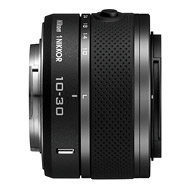 | Nikon 1 VR 10-30mm f/3.5-5.6 Pros: Very light and compact. Stabilized. Nice colors. Sharp enough. Cons: Plasticoso, sometimes not immediately the operation of "hook-release" of the button that makes the optics pass from the "collapsed" position of rest to that of use; Not bright, but you know... It's a kit lens. Opinion: It looks like a toy: to the touch (for the featherweight, the feeling of low strength, some "game" too much between the parts) and in the use. But his dirty work does it and, in good light conditions, he does it very well too. Obvious: It is a zoom from kit, not bright and to which you can not or should ask results that physiologically are not within its reach. Even at the maximum focal length (30mm, corresponding to about 81mm on FF) Forget all the semblance of "detachment" of the subject framed with respect to the background. A 10mm distorts little, and, in return, offers a beautiful wide angle view. I would call it a "clean" objective: its surrender, altogether, is admirable: beautiful colours, good contrast, sufficiently sharp..... sent on March 18, 2019 |
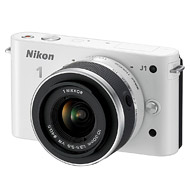 | Nikon 1 J1 Pros: Tiny and very light. Video quality is very good overall: even the less experienced will be able to make appreciable movies. Excellent color yield. Autofocus fast and accurate. NEF files that can be processed with the same programs and parameters that are used to process Nikon SLR NEFs. Cons: In my opinion the only real big versus is the size of the sensor, from "only" an inch, which does not allow that "detachment" effect of the subject from the background, even to the longer focal points. Opinion: Big machine. Lightweight.... Tiny... in fact a compact with slightly protruding optics, but not even more so (I speak of the 10 30 VR). Removed what, in my opinion, is the only real limit of the camera, namely a sensor that you "see" (from the photos) be smaller than that of the APS and the FF (you "see" because it struggles to "detach" the subjects from the background, succeeding a little hard in certain situations ions, and failing to do just in others) otherwise will give you great satisfaction. Nice colors, I would also say a good hold at the high ISO, which certainly will not be the stellar one of Fuji, but still remains satisfactory. Good autofocus, fast, accurate, reliable.... not very far, as performance, from that of an entry level reflex. The real ace of the J1's sleeve is the video department: the movies are really good!!! "You will discover" the beauty of shooting, comfortably and simply, short videos (up to 20 minutes, cmq!) with the utmost "naturalness", without having to set or "set" anything special... sent on March 04, 2019 |
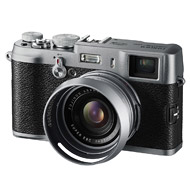 | FujiFilm Finepix X100 Pros: Exceptional JPEG files in absolute terms (not only in relation to other APS C): sharpness, bokeh, colors: 10 for all three.; Aesthetically beautiful; Quite compact: It is not the smallest ML on the market, but the fact that the fixed front lens really protruses very little makes it pocket-sized for a jacket; Price of the used really affordable: eye, eh, with 250-260 euros, practically the price of the Fuji Lens 23 F2 used for Fuji X, you can bring home a star! Cons: Autofocus not instantaneous; Nothing else, really. Opinion: Camera not only beautiful aesthetically, but who knows how to return the JPEG in the room absolutely exceptional as to delicacy, colors, overall yield. I have Nikon FF DSLRs and a micro 4/3 Col Zuiko 45 1.8: So I know what I'm talking about. I also possessed at the same time the XE1 with the 23 F2 (bought, the latter, to "sell Me" the X100): the rendition of the X100, especially in low light conditions, in my opinion give results altogether more pleasant than those provided by the XE1 ( So much so that I sold this here, and held the X100)! The files are beautiful: very sharp, contrased but never "pumped" in an unnatural way, always "adequate", correct, sober. It really seems to have snapped with the film. Even at full aperture, where I read the 23 F2 would be a tad soft according to some, I note instead an excellent overall yield, with good contrast, good sharpness and, hear hear, even a nice and pronounced bokeh: merit of the minimum focusing distance Very close that allows you to create beautiful effects "out of focus". A f 4.0 becomes an absolute razor. Sure, the AF is not lightning, but nothing dramatic. With a little practice you learn to "manage" it. Even those, my acquaintances, have gone to the versions S, T, F, under under regret having sold this "smooth": some have even bought it. The 12 mpx are more than adequate. sent on January 10, 2019 |
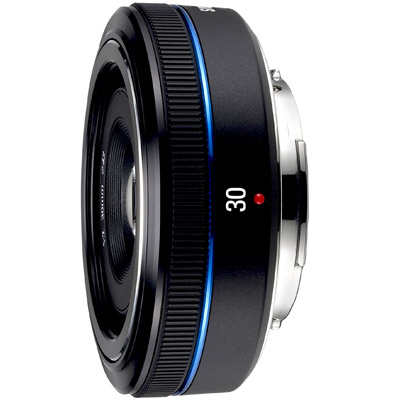 | Samsung NX 30mm f/2 Pros: Compactness, featherweight, overall optical yield really worthy of praise; Sharpness, minimum focus distance (an "almost macro"), very pleasant bokeh, low distortion. Cons: AF a little noisy (nothing catastrophic...., but you hear); Price not really derisial, construction of average invoice. Opinion: For owners of Samsung ML More compact (NX 1000, 2000, 3000, NX 200, 300 etc...) A lens to have absolutely! The possibility to focus at a very close minimum distance, together with the wide aperture of the diaphragm, allow this optic very "creative" effects, with an excellent detachment of the tops. At F2, well understood, it remains "very usable", that is also to TA the sharpness and contrast are not lacking (to be clear: we are not in front of those certain objectives style "years ' 80" that yes, they have a wide opening, but that, for the maximum yield, it is necessary to diaphragm one or two Stop). The featherweight and the reduced dimensions make it an almost "invisible" optics when it is attached to the machine and almost "impossible" once inside your fanny pack! It's thin, light, small! It distorts very little (but I talk about shots in Jpeg! In Raw I have never tried....), it also allows pretty "tight" portraits without the faces being deformed. The price is very "variable"... In the used they are found at 150, 200, 250 euros.... Honestly the last digit, as the lens can be put well, it starts to look a bit elevata....ma, I repeat, the Samsung 30 F2 is not a good optics "to be a pancake"... No: It is a good and deserving optics in terms "absolute", able to compete, Without problems, with ML systems and their more expensive and well-equided targets. With my (ex) Sigma 30 1.4 on my (ex) Nikon (D3300) APS C, albeit with greater aperture and weight and at least triple space (!), I could hardly bring out better shots than I can take home with this (on Samsung NX200)! Too bad the Samsung has withdrawn from photography. sent on November 28, 2018 |
 | Minolta AF 70-210mm f/4 Pros: Physically and aesthetically beautiful, to see and to use. Good performance, suitably robust, relatively light and compact, F 4.0 constant (therefore also at maximum focal point, unlike other kit optics), good overall optical rendering. The best value in absolute I think is that of the rendition of colors, always warm, pictorial, well saturated and contraated. Compatible Sony Alpha (A-mount) connection. Cons: Sharpness a little latent, especially at full aperture. I agree with what I wrote before me: It is noticeable, at the level of resolution and sharpness, that it is not a very latest generation optics. My Nikkor AF-S 55 200 on Nikon APS C definitely does better (under this profile). Opinion: First of all it is a nice goal, to keep in hand, to carry around, to use on the reflex.... Small and relatively compact and lightweight (not very light, OK, but not so heavy to "be heard" when you keep it mounted on the machine) gives a constant brightness of interest (especially at the focal lengths, where the zoom lenses of kit start to Become dark). Its greatest value is the rendition of Colour: Beautiful access, contrasting, pictorial. Good bokeh (although on APS C fatigue however to "detach" so decided the background from the closeups), autofocus fast (especially considering it is an outdated optics) and precise. It mounts 55mm filters, therefore very widespread and economically affordable. where "trudge" a little is on the side of the sharpness: not that it is soft in absolute sense, for goodness sake, but compared to newer design optics, or to fixed competitors always of the same era and Minolta house (on all I think of the 135 2.8, which is very , but much sharper), does not shine particularly. Definitely better closed at f 5.6. Overall it is certainly worth buying for those 80-90-100 euros that are required on average. However in excellent condition, I would not spend beyond these sums, looking, in the case, elsewhere. sent on September 26, 2018 |
 | Minolta AF 135mm f/2.8 Pros: Lightness and compactness. Sharpness and contrast. Colors. Autofocus. Uniqueness of the focal (now of 135mm autofocus from "medium price" do not produce virtually any more). Price in the used. Cons: I can't find it. Perhaps the excessive contrast for those who are fond of more "delicate" optics in the surrender. Opinion: Optics in my opinion outstanding. Ratio size-weight-dimensions-image quality absolutely unattainable from all the competition of fixed or zoom covering said focal. The various bright 135 fixed of Nikon, Canon, Sony, Sigma etc, cost a bang, weigh like boulders and are bulky. Zooms that cover the focal or have lower brightness (I think of the various F4-5.6) or are, in comparison, huge and very heavy: I say from (happy) possessor of the excellent Tamron 70 200 2.8 that I use on Nikon, which has a good yield but that..... Good heavens.... it weighs like a boulder and to carry around is very uncomfortable! The yield already at full aperture is great: sharpness at the highest level (... and we talk about a lens that was not designed exactly 5 or 6 years ago!!!!), very contrabeen (for those who prefer a softer yield maybe this may not be a "pro"), bokeh Particularly beautiful, qualitatively not inferior to that which give the optics a portrait. Wanting to make a comparison, perhaps a bit ' risky but that makes a little ' the idea, the results that returns this optics are similar to those of the Sigma Art 60 2.8 which has M4 or Sony attack. Ecco....la focal length of the latter is shorter, but the rendition of colors/contrast/bokeh, in my opinion, is similar as "typology". On my Sony A58 the autofocus is very fast and responsive: while not having the ultrasonic motor, the results in terms of speed are worth noting, very close to those of motorized optics. On APS, used for portrait, already manages to "detach" very well the subject.... maybe a little lunghetto, but outside there are no problems. I guess FF's doing even better. It is located on figures ranging from 120-130 to 170-180 euros.... If in good condition, and you want to use it on your Sony, it's always worth buying it! Really...... you'il never regret it! sent on September 17, 2018 |
 | Nikon 105mm f/1.8 Ai-S Pros: Portrait optics "very delicate" .... a yield without equal. Beautiful colors, very pronounced bokeh with decisive detachment of the floors. Cons: Portrait optics "very delicate": for someone, perhaps, could be too "delicate": to get the effect that can return, so to speak, a sigma 105 2.8 macro OS (optical as well possessed by me), you have to "limestone" in excess in post .... distorting, however, the proper and inborn nature of the glass in question. Another negative note is the predisposition to a certain flare in difficult light conditions: in comparison to more modern lenses one has to take this into account and pay attention to it. Opinion: If one expects "special effects" from the Nikkor 105 1.8, he will probably be disappointed .... I have defined the lens as "delicate", because this is his first and most important aspect. Beware: I did not say unclear, or slightly incised, or "soft" in the TA: no no, far from it: even at 1.8 the photos are very sharp and engraved ... The colors very "analog": you see that the goal was born and was conceived in "pre - digital" times. The detachment of the floors at full aperture is very decisive, similar to that of a 180 2.8, so to speak! The bokeh is very nice but, attention, not beautiful: the 180, which again for example, in my opinion makes better.rnThe manual maf, especially in TA, is an objective limit: really at 1.8 the "risk" of making portraits where the subject has an eye on fire and the other "almost" is very high ... and this, to me personally, is an effectI do not like it. I am also 105 2.5: overall I can tell you that they are two different optics: it would be unfair to better judge the first or the second: their yield is different, very good in both cases, but different ... ..rnThe optic suffers in a fairly pronounced flare: in difficult light conditions, contrast is lost and the image tends to "veil" in a clear way ... rn sent on January 31, 2018 |
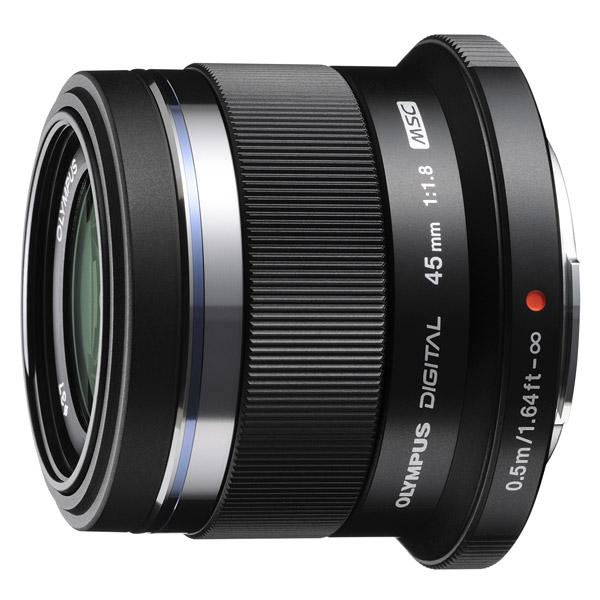 | Olympus M.Zuiko Digital 45mm f/1.8 Pros: Colors, sharpness, bokeh, ridiculous weights and footprints, unbeatable value for money Cons: I did not find it. Opinion: I had two. I got stupidly the first one I had .... but not even six months and I have to "repurchase (use) .rnHe has the micro system 4/3 MUST buy this optic! The price on the used is very convenient (we are about 170-180 euros), and even wanted to resell it, it's virtually a circular check. The most obvious feature is the size of the optics: I also have two 85mm for reflexes and I guarantee that this 45mm is really small. On the Oly EP3 it is almost disproportionate (in the sense that the machine looks too big in comparison to the lens) ... it weighs very little ... and gives unrivaled shots! The focal point, which is the most popular "classic" portrait (corresponds to a 90mm on FF), there is nothing like this 45! rnThe 2.8 zoom aperture is still more expensive, and not even the 42.5 Panasonic (1.8) which, in my opinion, has less pleasant colors. rnBokeh VERY good, greatsharpness, fast focus, beautiful saturated colors, vivid and contrasted .... seldom feel the need to "counter" the photo in post. rnThe owners of the zoom 14 - 42 f 3.5-5-6 of the kit: do you have the portraits that returns the 42mm kit zoom? rnEcco ..... this 45 will give you another thing! Everything else! RnrnOne other m4 / 3 system optics are great .... but they cost an eye. You bring him home with a cigarette! sent on September 21, 2017 |
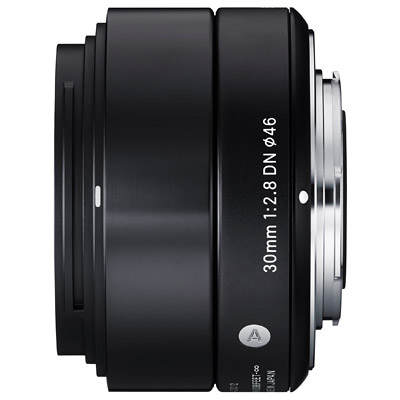 | Sigma 30mm f/2.8 DN Pros: No doubt the excellent value for money. Even as new takes home 160 euro (about) used, having patience, a centone.rnNitidezza, color returned (on Sony Nex), compactness (it is not a pancake, but it is reduced in size ... .diciamo which it is comparable to 16 to 50 from sony Alpha collapsible) kit Cons: Opening good but not fast (f2.8), so that effort, as a rule, to "disconnect" appreciably subjects from the background ... aesthetically "questionable" (I have the black knurled version, I think the old one): the smooth version is quite ugly, and very plasticky .... Opinion: I use it on an old Nex C3. Returns excellent images ... beautiful colors, "brilliant" but true to life, excellent sharpness (like all Sigma DN ART for sony and m4 / 3) the corresponding focal if used on Sony APS is that of a 45mm (in 24per36) 60mm if you use it on micro 4/3 (but in the latter case, they are honest, a 60 mm is difficult to exploit .... I had tried it at the time) .rnE 'perspective also quite compact, the Nex not become their own pocket with this 30, but almost ... rnDistorce a tad if you "overdo" approaching the subjects, but, in any case, for the same use and conditions it does in the end even the well more expensive 35 1.8 OSS FE of sony, which is one stop brighter, has stabilized, but a small insignificant detail, costs three times or less !!! rnIl low price makes it a bargain! At the same focal length, the "gain" of yield with respect to the zoom in 16 50 Kit of sony Alpha, in somesition 30mm, is netto.rnIn good light conditions the brightness f 2.8 is more than enough .... with little light, for example in closed environments, soffre.rnPer such conditions, or for those who want greater cmq maximum brightness, there is also a version 1.4 f 30 sigma, I tested a couple of days: it costs less than 35 sony OSS 1.8, and in my opinion is worth much more. sent on April 10, 2017 |
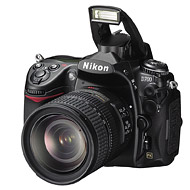 | Nikon D700 Pros: Robustness, squeaky clean files, speed, by machine feelings pro Cons: Well, weight, undoubtedly, can be heard .... has old CF cards, a bit 'outdated to-call level on the market .... Opinion: I'm not there to write whatever good they have already told my predecessors, I confirm the full ..... rnMa will "shake" with this consideration: I see, even today, of ads D7000 or D7100 or D7200 used, sold 400 , 500, 600 euro .... rnMa say unto you realize that with a little more you can bring home a car that is a space shuttle compared to them? rnChe has such a sensor "capable" that if eats breakfast the aforesaid? rnIl Full Frame is VERY best of DX, in every way, always, in (the house) and out, at low and high ISO, with optical light and not! RNLA file cleaning to be (only) 12 mpx D700 humiliate, outclass every where the images returned by DX! rnNon waste time .... do not waste money .... do not go to quibble vain or search for news on the improvements of the D7200 compared to the D7100 or D5600 D5500 ..... rnAggiungete compared to a couple of hundred bucks to what you thought to spend on a DX, and Buy yourself a D700! rn sent on January 19, 2017 |
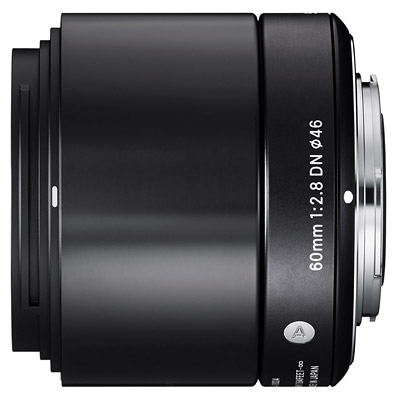 | Sigma 60mm f/2.8 DN Pros: first-class overall performance in absolute terms; Exceptional sharpness already at full aperture; excellent bokeh for portraits; compactness; feather-weight; Good general construction; price almost "ridiculous" when compared to benefits; Cons: Aesthetically cute, but not beautiful, design less attractive, for example, the Olympus Zuiko m4 / 3; Perhaps the focus ring to smooth fire and "slippery" if someone intends to use it in manual ... Opinion: Used paid 100 euro, it returns absolutely outstanding performance: call it perspective halfway (in a good way!) Between a lens purely from portrait (it owns the beautiful bokeh and appropriate focal length) and a tele macro (preserves extreme sharpness and really risolvenza at the highest levels); On my (old!) Pana GF1 produces first-rate portraits: I am honest, the yield of this lens has almost me "displaced" to the surprise of having in his hands a "lentina" so tiny and economic returns such photos ! .... RnPraticamente made me "think again" on the entire system m4 / 3 .... In the "portraits off" the subject, and the off well, like other fixed lenses from portrait that I own for SLR .. .... and I paid several times more than this !!! rn sent on September 26, 2016 |
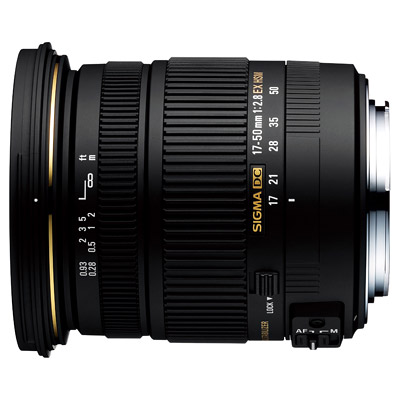 | Sigma 17-50mm f/2.8 EX DC OS HSM Pros: Sharpness, brightness, excellent for overall image quality, good bokeh, nice colors Cons: The stabilizer of my exemplary broke; exterior plastic and tires were damaged quite easily, Opinion: The step up from the various 18 55, 18 70, 18 105 etc ... of Nikon lenses Kit is everything, and is famous for its optics ability to "switch off" the subject from the background, thanks to brightness of the same; capacity which, conversely, is made almost entirely absent in the kit zoom; RNLA image quality is very good, excellent sharpness, very good bokeh (not like the fixed but, to be fair, not even that far), perhaps only the colors are slightly below those that return the optical Nikkor: I found them slightly "chilly" .... but nothing particularly negative or worthy of complaint .... rnAnche focal end (50 mm) and wide open enough critical condition for a constant aperture zoom lens, I did not notice quality declines or contrast: the image remains always engraved and detailed! rnAd focal beginning, 17mm, distorts a lot .... nothing dramatic, but the distortion is evident almost ogni photo type (not only architecture, palaces etc ...) rnPer first 50 mm plans are Pochini ..... well let's say you come to busts, perhaps portrait from the shoulders of the person up .... but no longer tightly framed, worth unpleasant distortion! RNLA minimum focus distance when in truth it is not enough to make "macro" (true), returns, however, very useful for special effects, type flowers in the foreground and blurred background .. ..or deliberately very tightly framed .... rnIl my copy has the perfect MAF (luck?!?), on the other hand the stabilizer works "jerky" .... in fact it broke because it is no longer his job .rnLa building is a bit 'controversial ..... very "plasticky" plastics, rubbers which tend to swell and lose traction with the objective body, not to mention the dirt that is deposited in the serrations .... sent on August 31, 2016 |
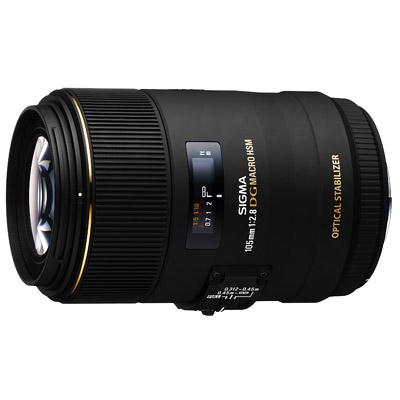 | Sigma 105mm f/2.8 Macro DG OS HSM Pros: Sharpness, bokeh, colour rendition, excellent usability of optics, even for portraits or for general shooting; Also relatively light, that is: feels and feels good that on the machine you have a tele, but not disproportionate! Cons: Maybe a Pelino "Plasticoso" to the touch: I have (happily) also the 85 1.4 always of Sigma, and as a construction the latter seems a little more robust... On APS, I confirm what others have said before, the maximum opening never falls under F 3.0. On FF, however, we arrive (even if at distances not very close) without problems to f 2.8. Update to 16.1.2019: The stabilizer has been "party" for almost a year. And I read in the forums that are not the first nor the second buyer that happened. The optics go well even so, but, of course, the possibility of breaking the stabilisation mechanism must be weighted before the purchase. Opinion: Superb optics! Beautiful colors returned, the bokeh pleasant in portraits (which is not of the type "scorched earth behind the subject" but is very very pleasant, quite different than the old-fashioned macro so "rough" in the out of focus). For portraits I use this 105 and the 85 1.4 always of the Sigma: they are complementary, I am sorry to anyone who is in doubt between the two, but they would actually be owning Entrabi! It is not better the one or better the other, they made both excellent (I emphasize.... excellent!) but different... Personally I prefer paradoxically this 105, which has not been done electively for the portrait but lends itself to the purpose beautifully! The yield recalls that of the Nikkor 105 2.5 Ais..... crisp and with a fuzzy, colorful, and that, while still being "visible", not only does not disturb, but rather "enriches" and is a valuable frame to the subject portrait... I use it on my little son.... who has no wrinkles, though! :-) Update to 16.1.2019: The stabilizer has been "party" for almost a year. And I read in the forums that are not the first nor the second buyer that happened. The optics go well even so, but, of course, the possibility of breaking the stabilisation mechanism must be weighted before the purchase. sent on May 23, 2016 |
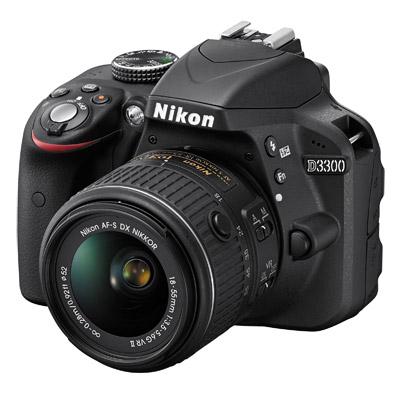 | Nikon D3300 Pros: really notable quality sensor! Iso held high. Compact size and lightweight! Price Cons: He did not, of course, the commands available to higher-end SLR. The body, lightweight, also appears quite fragilino ... we say that should be treated fairly with regard to everyday use. The 24 mpx, in my opinion, are even excessive! Opinion: The D3300, if it were a car, it would be a Fiat 500 with a 3.0 engine from 300 hp V6! rnIl camera body is definitely entry level, both for materials and for commands available .... but ... trust me .... it is not necessarily a flaw: with 50cc carries around really a feather! .rnVengo from D300 ( complete with a battery grip), with a sturdy dinosaur of commands and functions infinity but ... with an "engine" far less powerful and handsome that, the evidence shows (photos), takes "pay" in almost all situations this his granddaughter! RNLA D3300 is really, but at the same concentration of technology as "essential", "minimalist", almost ..... and then, very, very handsome! rnAlla order still allows you to work in manual fine without having many "keys in sight ".... in my opinion all you really need, there is! rnIl sensor "holds" fine too Iso very high ... the ISO 2-3000 are still fully fruibili.rnNon least, has an Octoberimo automatic white balance, significantly more "crafty" and reliable than, for example, the d3100 (also owned by me). sent on May 10, 2016 |
 | Nikon AF 35-70mm f/2.8 Pros: very good optics for yield, sharpness and blurring Cons: OPAPACIZATION, OPACITY, OPAPACIZATION, OPAPACIZATION Opinion: sent on January 08, 2016 |
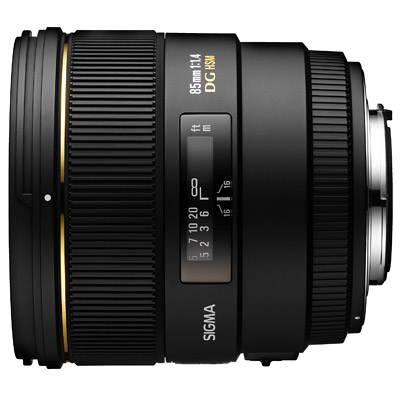 | Sigma 85mm f/1.4 EX DG HSM Pros: First of all the combination: "extreme sharpness at full aperture-wonderful bokeh": its absolute dowry more worthy of note! Then the construction very "pro".... Optics that in his hand feels so robust, "true"! Cons: The AF not always very precise... Often a little uncertain in the "stop" the focus, definitely not very reactive in the micro changes of focus.... However, let's face it, at F 1.4, opening with which I use the optics in 80 percent of cases, I really would be in trouble to say when is the optical AF to err and when, conversely, I am not "center" correctly... At these openings we really talk about a few inches of depth of field... Opinion: Excellent value for money I possess (still currently) the Samyang 85 1.4, beautiful, and I had, before this Sigma, the Nikkor 85 1.8 G (aesthetically, by the way, much more plasticoso): the latter, for goodness sake, excellent lens, sharp already at full aperture, beautiful colors, but..... It wasn't and it's not a f 1.4, let's face it too! The bokeh was very very pleasant, but without being able to have that effect (wonderful!!!) fairytale and dreamy that gives me this Sigma (and that, of course, give the homologues Nikkor)! Moreover, my personal opinion, the 85 1.8 g always gave me the impression of being too "saturated" in the surrender, almost "contrived" in some situations of light.... The Sigma I find it a more neutral and pleasant rendition... At 1.4, I repeat, it's a real blade, crisp... That is: I, practically, use it almost only at full aperture and I never found myself having "regretted" not having closed a bit ' the diaphragm to have more detail. The only real flaw and Achilles heel of the lens, is the autofocus. Not so much for the slowness, or for the lack of precision (I have not noticed phenomena of back or front focus in any of the 4 reflex with which I used it)... As for a certain physiological "indecision" in taking the focus point. Same behavior that also have the Sigma 50 1.4 old and the Sigma 30 1.4 old (pure from me used). Nothing particularly serious, however, I recognize, the phenomenon can become particularly annoying species if you want to "run after" to moving subjects (like: My baby!). In this sense the Nikkor 85 1.8 G was indisputably better. The price in the used is very palatable. sent on January 08, 2016 |
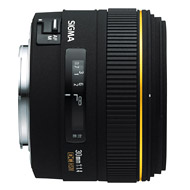 | Sigma 30mm f/1.4 EX DC HSM (old) Pros: Excellent focal (better than 35 dk Nikkor which still feels too tight); Closed to f. 8 - f. 9 is ultranitous; Bokeh very pleasing to all opening; Very solid and "important" construction; Nice colors. Cons: Only discrete autofocus for speed and precision; Sometimes inaccurate MAF with relative photos not perfectly focused; Opinion: It gives the feeling (very nice) to have a "real" and very "pro" objective in the hand, exactly the opposite of what happens to the 35 Nikkor 1.8 dx, which I own, which, in the face of the first, looks like a plastic cap : Fine lightness, but not Yogurt jars in front of the reflex :-); The overall yield is very good, worthy of note and consistent with a fixed optic of this opening! Large apertures in some situations (but not in all and not always!) Give a somewhat "bleak" effect, that is, it almost seems It is super-soft, but not in fact, just the colors are not so contrasted and decided as it did when it "closed" a little the diaphragm: the overall yield, however, is very pleasing, even af ??1.4 where The optic is fully usable and enjoyable! RnIo, personally, if I take such a view of the genus is to use it often and willingly proThis opening! RnDo use f.8, f9, type for landscape photos, it becomes ultra-slim and always maintains a nice bokeh (obviously less blurred): never seen anything like that with other fixed ones I possess! RnThe autofocus works in So we can say ... questionable: on some occasions, even in full light, it is difficult to "take" the subject, and sometimes on some occasions (NEVER, though) the focus is not accurate: obviously there is It can be seen more clearly than when it is a little closed (NB: it is not a front back focus problem, because it does not always do so, say, on average, 1 out of 3); rn this soft side So much I complained, honestly, I did not notice it so clearly, ... As far as the 35 1.8 g dx, which I also possessed and used, in my opinion is a pelin underneath the render of color, but I consider it more opaque "Correct" as it distorts less: paradoxically, while having a field angle more Ù Wide and getting more involved with this problem, the portraits are better with the sigma 30 than with the nikkor 35; finally: if you find it at 160-170 or even 180 euros, buy it with your eyes closed, you will not regret it! sent on November 06, 2015 |
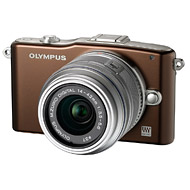 | Olympus PEN E-PM1 Pros: Although it is small, basically a compact (if you except the speech lens that protrudes forward) once picked it up and used, gives the sensation of having a small jewel in his hands: the shutter snaps when you feel, in terms of vibration, and this alone made immediately makes it clear to those who use it that is not one of the many compact camera .... but a real camera! rnBellissimi effects that can get with various "filters: the white black and, in particular, is really worthy of note ... also a colleague of mine, who just clicks with the film, has been impressed by the remarkable fidelity with which the machine "mimics" the shot in B / N Cons: If the B / N is very quaint and true to what you could do with a film, here, the color, that the photos "normal", in my opinion leaves much to be desired .... not talking about ISO, contrast, sharpness, etc .. etc .., but just the overall end result that, with the optical 14-42 kit, is, in my view, very disappointing! In all honesty: the final result is far below that which can give, for example, my old D40 with its measly 6 mpx outclasses the Pen in almost all conditions, except perhaps that in low light above 1000 iso .... Opinion: In short, in terms of quality it is not, and in my opinion will never be, a replacement (light) of a SLR camera of any brand and in any year it can be! We say that is quite a compact evolved, with large sensor and a particularly pleasant use .... rnOttimi the effects of various filters "art" selectable, practically I use ONLY when I want to take pictures with those special effects .... and in ordinary situations or take away the cameras, the quality, the Canon Ixus or compact camera, for tascabilità (which does not have the Pen, given the optics "disproportionate" and proportionate to the small camera body. sent on August 12, 2015 |
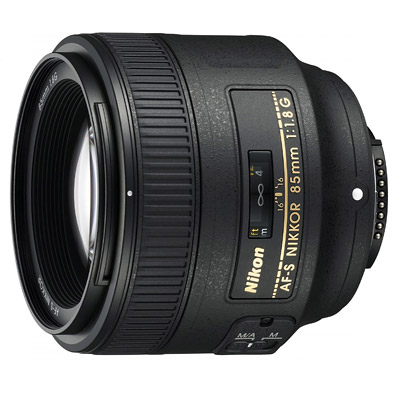 | Nikon AF-S 85mm f/1.8 G Pros: Sharpness already at full aperture, bokeh very beautiful, light and unobtrusive; Cons: A bit 'plasticky ... ah .. minimum distance of MAF a little long ... In other words: forget the close-ups, for those you'll have to opt for an optical or longer or a macro .... Opinion: Exceptional: consigliatissimo! I had the previous 85 af-d: I would say this here is a decided step forward ... and not only for sharpness at full aperture, as often and willingly (correctly) it law into reviews ... also closed to 2.8, 3.5, 4.5, anyway has an overall yield more pleasant, more captivating del precedente.Ottima resistance to flare and results always very "sharp"! sent on May 22, 2015 |
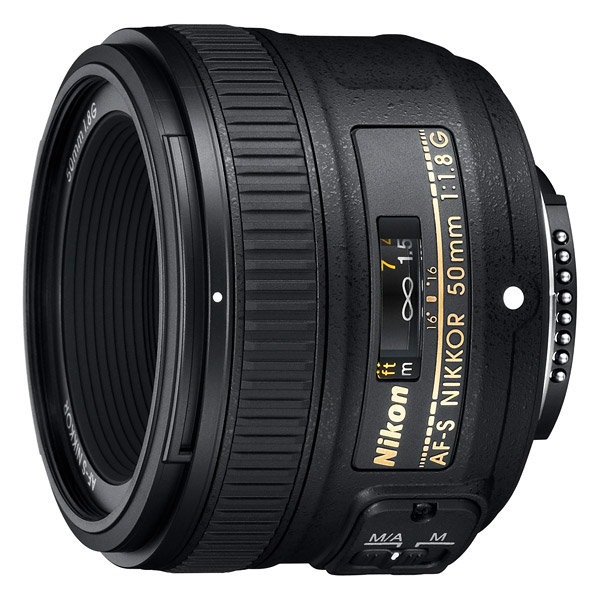 | Nikon AF-S 50mm f/1.8 G Pros: On everything else, and above all, excellent sharpness, contrast and resolution even at full aperture; beautiful bokeh, much better than the 50 AFD. Excellent color rendering ... Cons: None found Opinion: Who takes the 50ino fixed to use it mainly at full aperture (or almost), will find in this 50 1.8 g a valuable and loyal ally ... rnNotevole and obvious step forward compared to 50 AFD, previously owned by me and then changed for this last of this writing: clarity and contrast definitely two steps forward, but also a nice bokeh from "quasi - optical - to - portrait", although still slightly short for close-ups (on APS C) .rnPer means busts, the maximum .... says a friend of mine, owner of the 50 1.4 g, 1.8 that "makes" total even better than his, paid nearly doppio.rn sent on February 25, 2015 |
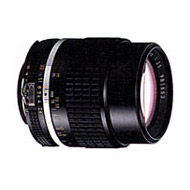 | Nikon 105mm f/2.5 Ai-S Pros: Optical portrait (and not only) just outstanding! Lose the test and the various graphics of resolution, sharpness, etc .... Photos to the hand, which matter most at the end of the whole, the 105 2.5 AIS is astounding, believe me, and so to give an example in terms of yield Overall it clearly breaks the good 85 1.8 AFD (also used by me): it is far more incisive the first all-opening than the 85 1.8 closed at 2.5. I also have the 80-200 2.8 (first version), also very good in the portraits, but we are always inexorably behind the 105! And then it is lightweight, comfortable with its removable, discreet, dimensional, massive and "precious" lenses in mechanical construction. UPDATED on Aug. 28, 2017: now I use it (almost only) on a full size D700. It only confirms the excellent abilities already listed. In full size the af 2.5 field depth is already very much reduced (if my baby is not front of the camera, & egravis; It's easy to get the effect "one eye on fire and the other no" (which I do not like)): you do not feel the need for greater brightness or "detachment capacity" of the planes, already marked on a FF compared to Format DX.rnNON DISTORTION .... NO! As you approach the subject .... it will never be returned to the photo that annoying and despicable feeling of "I went too close", which often give me, for example, 85 mm. (Yes, okay, the focal length is shorter in that case, but with 105 I can really "exploit" to the bottom the minimum distance of MAF) Cons: Well, the only new one is manual focus, which inevitably "loses" a few clicks ... but those who "take" with the right MAF, pay back for everything! On the D700's bright viewfinder, the manual MAF is also "relatively" simple: a bit of a hand, the "availability" to take a few more clicks than would be done with a self-focused focus, and something (very) good He always brings home !!!! rn Opinion: Exceptional in everything: except for the case of a passionate who a priori discards the optics with the manual MAF, for all the others a goal to be absolutely! RnBut, as I rightly and properly read in some reviews, the blur of 105 is not One of those "burnt earth" behind the subject in focus, this characteristic, which in an ordinary goal would be seen (or at least it is seen to me) as a "limit", in this 105 paradoxically becomes a bonus: the bokeh To say, is so creamy, "pastel", pleasing and enjoyable, which represents, compared to all the nikon goals I own or used, an absolute "unicum"! Maybe a bright 85, or a 135 f.2 or even an 80 200 2.8 will be able to "detach" the subject in the foreground from the background rather than the background, but they will not succeed, believe me, to return that yield worthy of a razor for The subject on fire and with the oil painting tracts for the out of focus (front and back of the subject) of thisI'm tele. In FF, an old D700, it confirms its excellent talents. However, at a first "discharge" of the photos, some of them may seem a bit "lacking in contrast", so to speak: but just act with two or three clik posts (stuff for a while, eh ....) And all the qualities of the glass are exalted! sent on December 02, 2014 |
 JuzaPhoto contains affiliate links from Amazon and Ebay and JuzaPhoto earn a commission in case of purchase through affiliate links.
JuzaPhoto contains affiliate links from Amazon and Ebay and JuzaPhoto earn a commission in case of purchase through affiliate links.May Beauty Be Everywhere Around Me